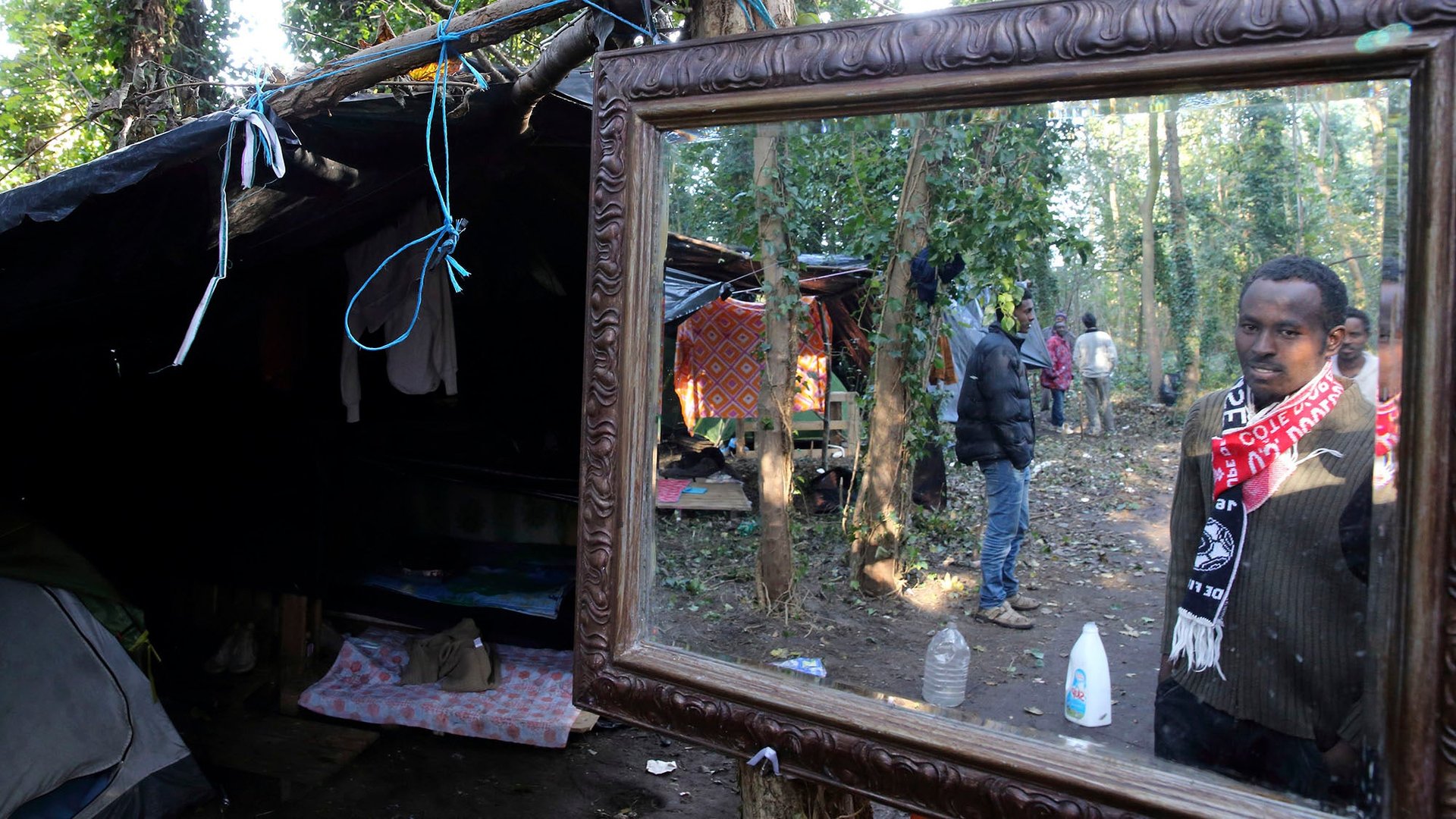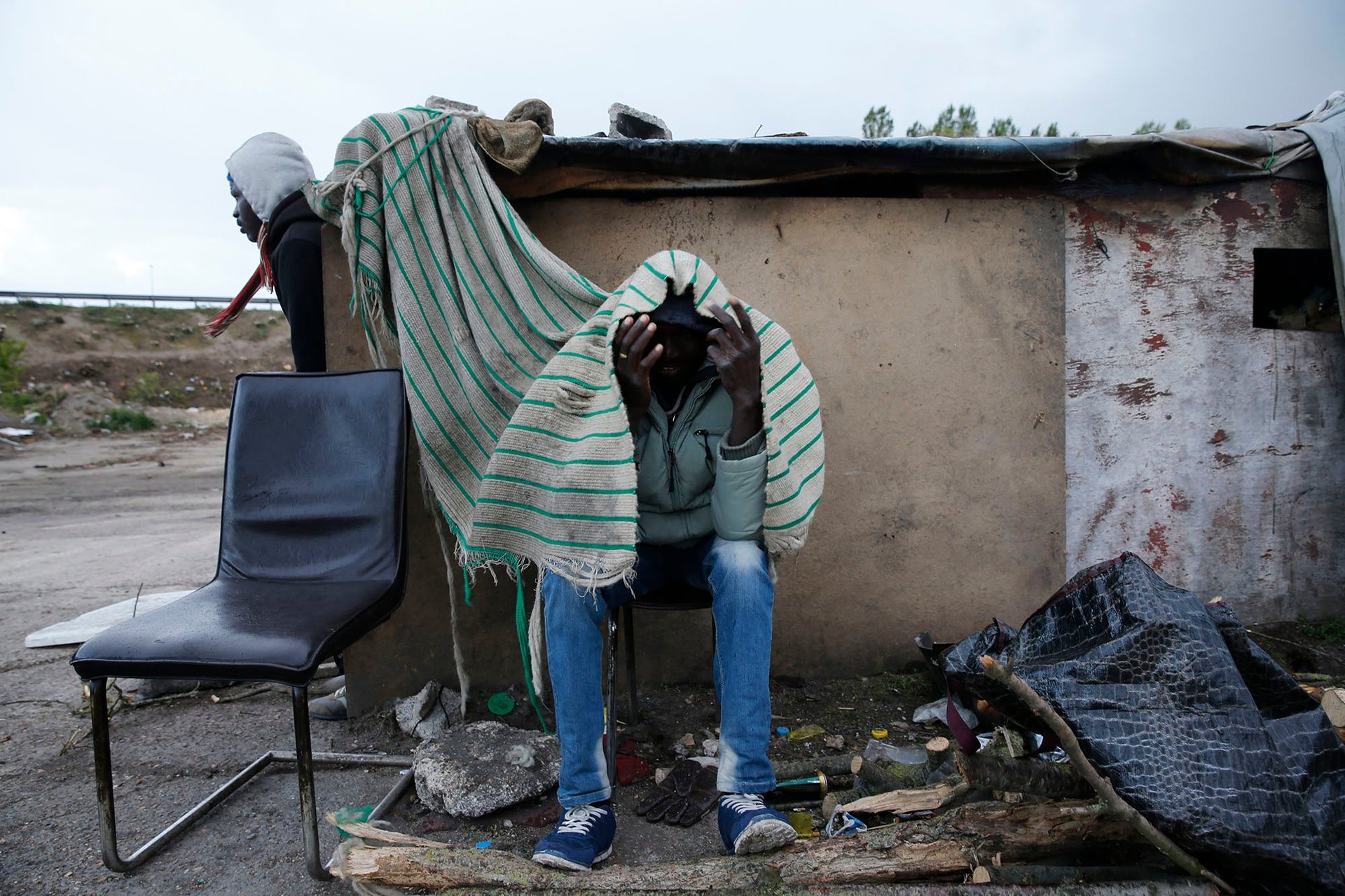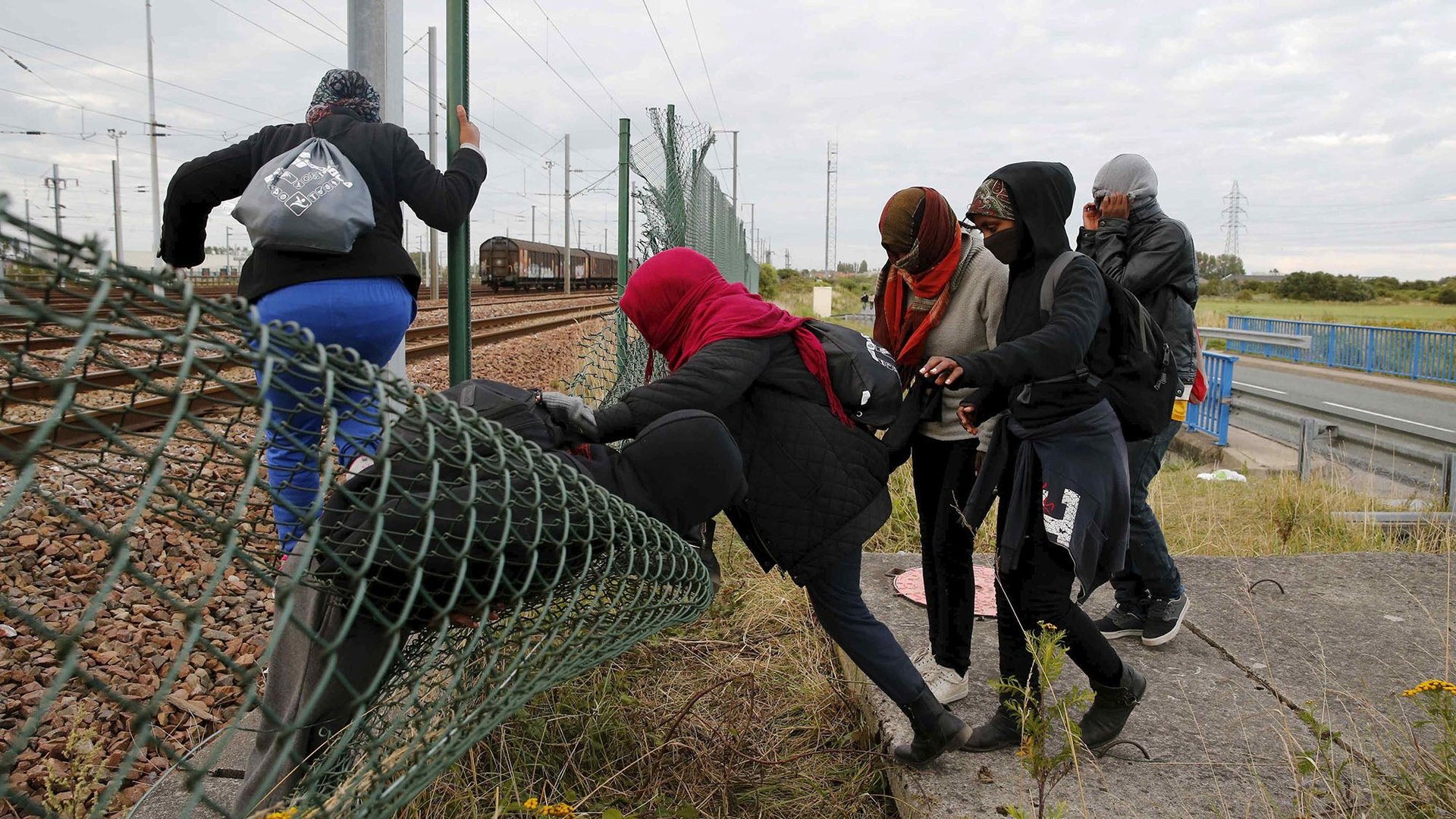A visit to the “New Jungle” migrant camp in Calais reveals the humanitarian crisis in the heart of Europe
As the sun sets on Calais, a new barbed wire fence glints in the evening light, casting a shadow over the growing migrant camp known as the “New Jungle.”


As the sun sets on Calais, a new barbed wire fence glints in the evening light, casting a shadow over the growing migrant camp known as the “New Jungle.”
Through the thick undergrowth of what was once an industrial dumping ground, tents and tarpaulin structures stretch into the distance. These are the makeshift homes currently providing insufficient shelter from the elements for more 3,000 refugees. On the other side of the fence, cars, and lorries trundle towards the port of Calais—and the northern edge of the Schengen Area, where people can move freely across much of Europe.
With Operation Stack in full force, and the British prime minister, David Cameron, expressing “every sympathy with holidaymakers,” the body count at Calais quietly continues to rise. A migrant died on July 28 as he tried to reach the UK. He was the ninth person to lose his life to the Calais-Dover gauntlet between June and July.
Cameron has pledged that the UK government will do everything it can to deal with this situation, but sitting in the detritus of the Calais camp, it is clear that the real crisis is humanitarian and is being fatally overlooked.
We have made two visits to Calais, spending several days at a time interviewing the camp’s residents. Our research is revealing the desperate conditions in which they are living. It is time the UK and French governments took responsibility for a shared issue. So far, all migrants are being given is more barbed wire.
Life in Calais
“When I first got to the Jungle, I thought to myself: ‘is this really Europe?’,” said Ilyas, a Sudanese migrant whose family were murdered by Janjaweed militia.
He showed us the rudimentary “kitchen” he uses to cook—a dusty tent propped up with branches, with no place to safely store food. Like many, he had taken the hard route to Europe, through the Sahara desert—where three of his fellow passengers perished—and then the equally deadly boat journey across the Mediterranean.
Ilyas’s friend showed us a shaky video he made on his phone of his eight-day sea crossing, this time from Egypt: “We did not have any water for three days,” he explained, flicking through his phone to show happier images of friends and family in the country he was forced to leave.

Their troubles did not end when they reached European soil. Migrants we met in Calais who landed on Italian shores report being abandoned by authorities. Young and able men, in particular, are kept in camps for no longer than a few days; many end up homeless and hungry on the streets of Italy. As Italian agencies struggle to cope with the record numbers of migrants crossing the Mediterranean, some report being explicitly told to travel to northern European countries such as France, Germany, and the UK. Others say they have even been shown a map.
So a small minority of the 137,000 migrants who have arrived in Europe so far this year have ended up in Calais. The New Jungle—less than one square kilometer in area—is where thousands of migrants live in appalling conditions that would not meet any humanitarian standards.
Toilet facilities are limited. There are two dozen portaloos and a few wooden toilet blocks with no handwashing facilities. Piles of rubbish attract rats and other pests. There is only access to cold water, often at some distance from the ad hoc living spaces. It is unsurprising then that many residents told us they are suffering from fevers, stomach pains and diarrhea.
Some residents of the camp use chemical containers to transport water to their tents—and every morning, men, women, and children as young as ten can be seen queuing for hours for a rare opportunity to gain access to a shower. At every turn, migrants can be seen limping and bedraggled, visibly injured by the increasing risks they are taking to enter the UK. Others say they are victims of police brutality and local thugs. Médecins du Monde is doing excellent work in the camp, but the scale of injury and illness is increasing.
A global crisis
Calais is undoubtedly a humanitarian and public health crisis. Yet it is only a microcosm of the migration crisis as a whole. In the world today, a population the size of Italy has been forced from their homes, putting global numbers of refugees at a level not seen since the end of World War II.

Developing countries—not European nations—host most of them. Turkey alone gives refuge to 1.7 million refugees from Syria. The next five countries hosting the largest numbers of refugees are Pakistan, Lebanon, Iran, Ethiopia, and Jordan.
On the northern edge of the New Jungle, a huge bunker looms over the people queuing for a shower. Built during the World War II to protect Hitler from invasion, it reminds us that this is not the first time Calais has been on the frontline of efforts to keep out perceived existential threats.
Britain’s home secretary, Theresa May, has pledged to spend another £7 million ($10 million) to reinforce Fortress Calais with more barbed wire—and an archipelago of migrant camps is spreading across the continent. For her, and for the British government, this is a security threat. Spending time with the residents of the Calais camp however, things look starkly different. It’s time to wake up to the humanitarian crisis unfolding in the heart of Europe.